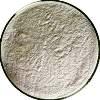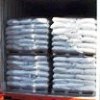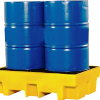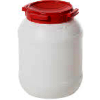Pure Calcium Acetate & BP USP FCC Food Grade Manufacturers Suppliers, India
Anmol Chemicals are manufacturers of Specialty Chemicals and Pharmaceutical Excipients, in India. Anmol Chemicals Group has manufacturing facilities spread across India, representatives in Houston Chicago USA and toll manufacturers in China. We make IP, BP, USP, Ph Eur, FCC or Food Grade, ACS, AR or Analytical Reagent Grade, LR or Laboratory Reagent Grade and Pure Grades of various chemicals. All our items are analyzed to meet the required standards.
Our manufacturing facility is FDA GMP approved and ISO-9001, ISO 14000, OHSAS 18000, ISO 22000, FSSAI HACCP certified. We are offering products manufactured as per Kosher and Halal approved method. We are pre-registered with "Reach" for export to European countries.
CAS No.: 62-54-4 anhydrous & 5743-26-0 monohydrate, EC Code EINECS: 200-540-9, Molecular Weight: 158.17 anhydrous & 176.19 monohydrate, Chemical Formula: C4H6CaO4 anhydrous & C4H6CaO4.H2O monohydrate

Specifications of Commercial Pure Calcium Acetate:
Calcium Acetate is a fine, white, bulky powder, freely soluble in water and slightly soluble in alcohol.
Assay: Not less than 99.0% and not more than 100.5% of Ca(C2H3O2)2, calculated on the anhydrous basis.
Chloride: Not more than 0.05%.
Fluoride: Not more than 0.005%.
Lead: Not more than 2 mg/kg.
Sulfate: Not more than 0.1%.
Calcium Acetate BP, Ph Eur Grade
C4H6CaO4 --- 158.2 --- 62-54-4
DEFINITION
Calcium diacetate.
Content: 98.0 per cent to 102.0 per cent (anhydrous substance).
CHARACTERS
Appearance: White or almost white, hygroscopic powder.
Solubility: Freely soluble in water, slightly soluble in ethanol (96 per cent).
IDENTIFICATION
A. It gives reaction of calcium.
B. It gives reaction of acetates.
TESTS
pH: 7.2 to 8.2.
Readily oxidisable substances: Dissolve 2.0 g in boiling water and dilute to 100 ml with boiling water, add a few glass beads, 6 ml of 5 M sulphuric acid and 0.3 ml of 0.02 M potassium permanganate , mix, boil gently for 5 min and allow the precipitate to settle. The pink colour in the supernatant is not completely discharged.
Chlorides: Maximum 330 ppm.
Nitrates: Dissolve 1.0 g in water and dilute to 10 ml with the same solvent. Add 5 mg of sodium chloride, 0.05 ml of indigo carmine solution and add with stirring, 10 ml of nitrogen-free
sulphuric acid. The blue colour remains for at least 10 min.
Sulphates: Maximum 600 ppm.
Aluminium: Maximum 1 ppm.
Arsenic: Maximum 2 ppm.
Barium: Maximum 50.0 ppm.
Magnesium: Maximum 5.00 × 102 ppm.
Potassium: Maximum 0.10 per cent.
Sodium: Maximum 0.50 per cent.
Strontium: Maximum 5.00 × 102 ppm.
Heavy metals: Maximum 20 ppm.
Water: Maximum 7.0 per cent.
Calcium Acetate USP Grade
C4H6CaO4 158.17
Acetic acid, calcium salt.
[62-54-4].
Calcium Acetate contains not less than 99.0 percent and not more than 100.5 percent of C4H6CaO4, calculated on the anhydrous basis.
Identification: A solution (1 in 20) responds to the tests for Calcium and for Acetate.
pH: 6.3 to 9.6, in a solution (1 in 20).
Water: not more than 7.0%, determined in a 0.7-g specimen.
Limit of fluoride: the limit is 0.005%.
Arsenic: 3 ppm.
Heavy metals: the limit is 0.0025%.
Lead: 0.001%.
Chloride: 0.05%.
Sulfate: 0.06%.
Limit of nitrate: To pass the test.
Limit of aluminum (where it is labeled as intended for parenteral use or for use in hemodialysis or peritoneal dialysis)—
Barium (where it is labeled as intended for use in hemodialysis or peritoneal dialysis): the limit is 0.05%.
Limit of potassium (where it is labeled as intended for use in hemodialysis or peritoneal dialysis): the limit is 0.05%.
Limit of sodium (where it is labeled as intended for use in hemodialysis or peritoneal dialysis): the limit is 0.5%.
Limit of strontium (where it is labeled as intended for use in hemodialysis or peritoneal dialysis): the limit is 0.05%.
Readily oxidizable substances: Dissolve 2.0 g of it in 100 mL of boiling water, add a few glass beads, 6 mL of 10 N sulfuric acid, and 0.3 mL of 1 N potassium permanganate, mix, boil gently for 5 minutes, and allow the precipitate to settle: the pink color in the supernatant is not completely discharged.
Calcium Acetate FCC Food Grade
Ca(C2H3O2)2 Formula wt 158.17
INS: 263 CAS: [62-54-4]
DESCRIPTION
Calcium Acetate occurs as a fine, white, bulky powder. It is freely soluble in water and slightly soluble in alcohol.
Function: Buffer; stabilizer; firming agent.
REQUIREMENTS
Identification: A 1:10 aqueous solution gives positive tests for Calcium and for Acetate.
Assay: Not less than 99.0% and not more than 100.5% of Ca(C2H3O2)2, calculated on the anhydrous basis.
Chloride: Not more than 0.05%.
Fluoride: Not more than 0.005%.
Lead: Not more than 2 mg/kg.
Sulfate: Not more than 0.1%.
Water: Not more than 7.0%.
Manufacturers
ANMOL CHEMICALS
S-8, SARIFA MANSION, 2ND PRINCIPAL SHAIKH HASAN MARG, MUMBAI 400009, INDIA
TEL: (OFF) 91-22-23726950, 23774610, 23723564. FAX: 91-22-23728264
e-mail: info@anmol.org
Copyright and Usual Disclaimer is Applicable
Exporters to USA, UAE, Europe, South Africa, Tanzania, Kenya, Egypt, Turkey, Nigeria, Uganda, Brazil, Chile, Argentina, Dubai etc.
Representatives in New York, Houston - Texas, Chicago - Illinois, Los Angeles.
Fast Selling IP BP USP ACS FCC Food Grades of Chemicals by Anmol Chemicals
Aluminum Chloride ---------- Ammonium Sulfate ----- Ammonium Persulfate
Aluminum Potassium Sulfate - Ammonium Chloride ---- Ammonium Bicarbonate
Ammonium Carbonate --------- Benzyl Alcohol ------- Boric Acid
Benzoic Acid --------------- Borax; Sodium Borate - Calcium Chloride
Calcium Hydroxide ---------- Calcium Acetate ------ Calcium Butyrate
Calcium Lactobionate ------- Calcium Levulinate --- Calcium Saccharate
Carbamide Peroxide --------- Citric Acid ---------- Calcium Phosphate
Calcium Oxide -------------- Calcium Sulfate ------ Chromic Chloride
Cupric Chloride ------------
Ferric Chloride ------------ Ferric Nitrate ------- Fumaric Acid
Gentian Violet ------------- Glacial Acetic Acid
Lactobionic Acid ----------- Magnesium Butyrate
Magnesium Oxide ------------ Magnesium Chloride --- Magnesium Sulfate
Malic Acid ----------------- Maleic Acid ---------- Manganese Chloride
Manganese Sulfate ---------- Methylene Blue ------- Oleic Acid
Octyldodecanol -------------
Propylene Carbonate -------- Potassium Acetate ---- Potassium Carbonate
Potassium Hydroxide -------- Potassium Chloride --- Potassium Phosphate
Potassium Bitartrate ------- Propylene Carbonate -- Selenious acid
Sodium Molybdate ----------- Sodium Perborate ----- Sodium Phosphate
Sodium Propionate ---------- Sodium Acetate ------- Sodium Bicarbonate
Sodium Hydroxide ----------- Sodium Chloride ------ Sodium Thiosulfate
Sodium Selenite ------------ Urea ----------------- Zinc Chloride
Other Best Selling Products
Ammonium Bromide ----------- Ammonium Phosphate --- Barium Chloride
Butylated Hydroxyanisole --- Butylated Hydroxytoluene
Calcium Nitrate Nitrite ---- Calcium Propionate --- Copper Sulfate
Ceric Ammonium Nitrate ----- Cinnamaldehyde ------- Isatoic Anhydride
Directly Compressible Calcium Carbonate ----------- Encapsulated Citric Acid
Encapsulated Fumaric Acid -- Encapsulated Sodium Bicarbonate -
Encapsulated Sorbic Acid
Potassium Bromide ---------- Potassium Iodide ----- Potassium Nitrate Nitrite
Sodium Bromate ------------- Skatole -------------- Sodium Butyrate
Sodium Nitrite & Nitrate --- Sodium Bromide ------- Sodium Diacetate
Sodium Formaldehyde Bisulfite Strontium Chloride -- Stannous Chloride
TBHQ Tertiary Butylhydroquinone
Calcium Acetate
Commercial Pure & USP BP FCC Food Grade CAS 62-54-4 anhydrous 5743-26-0 monohydrate












